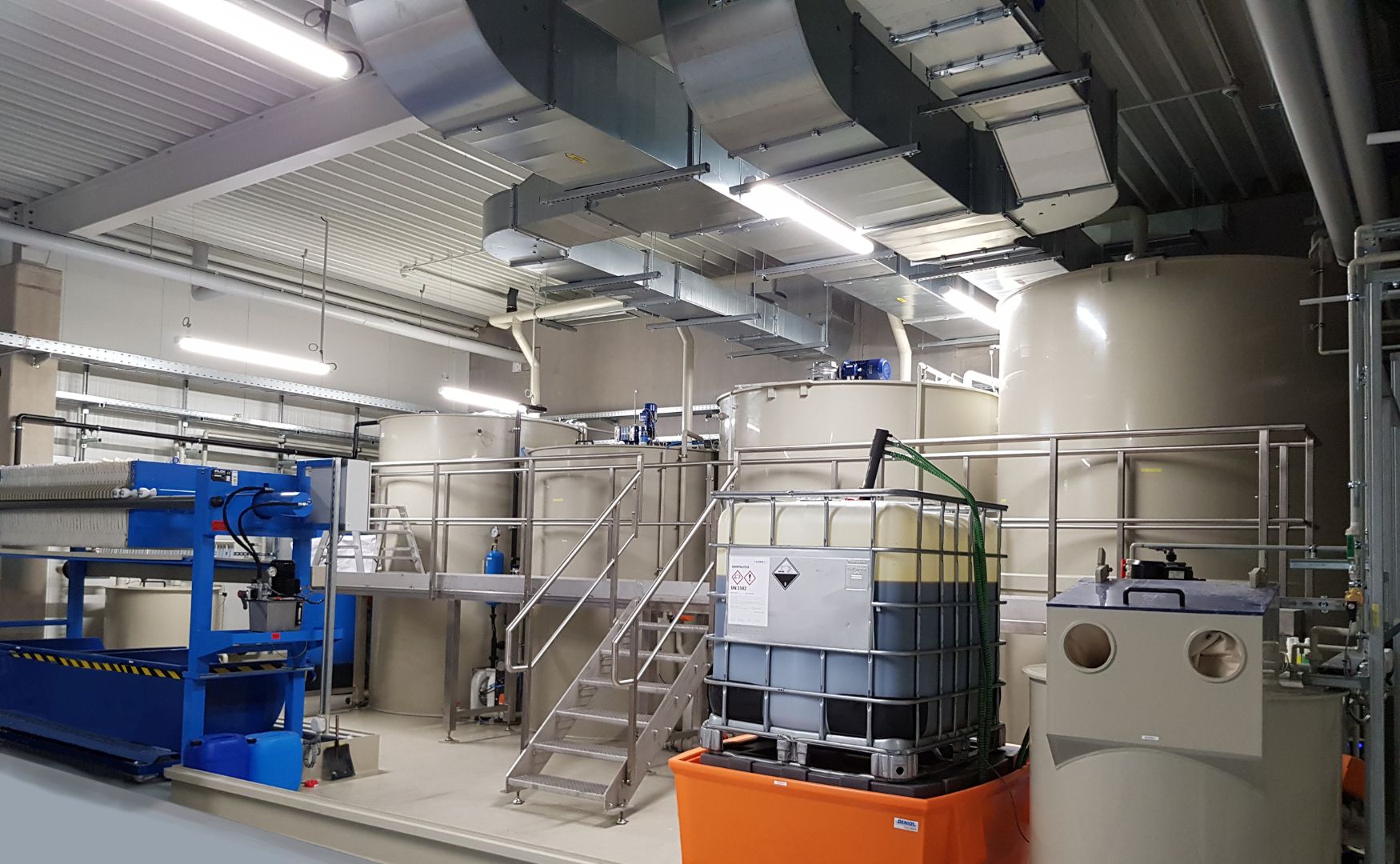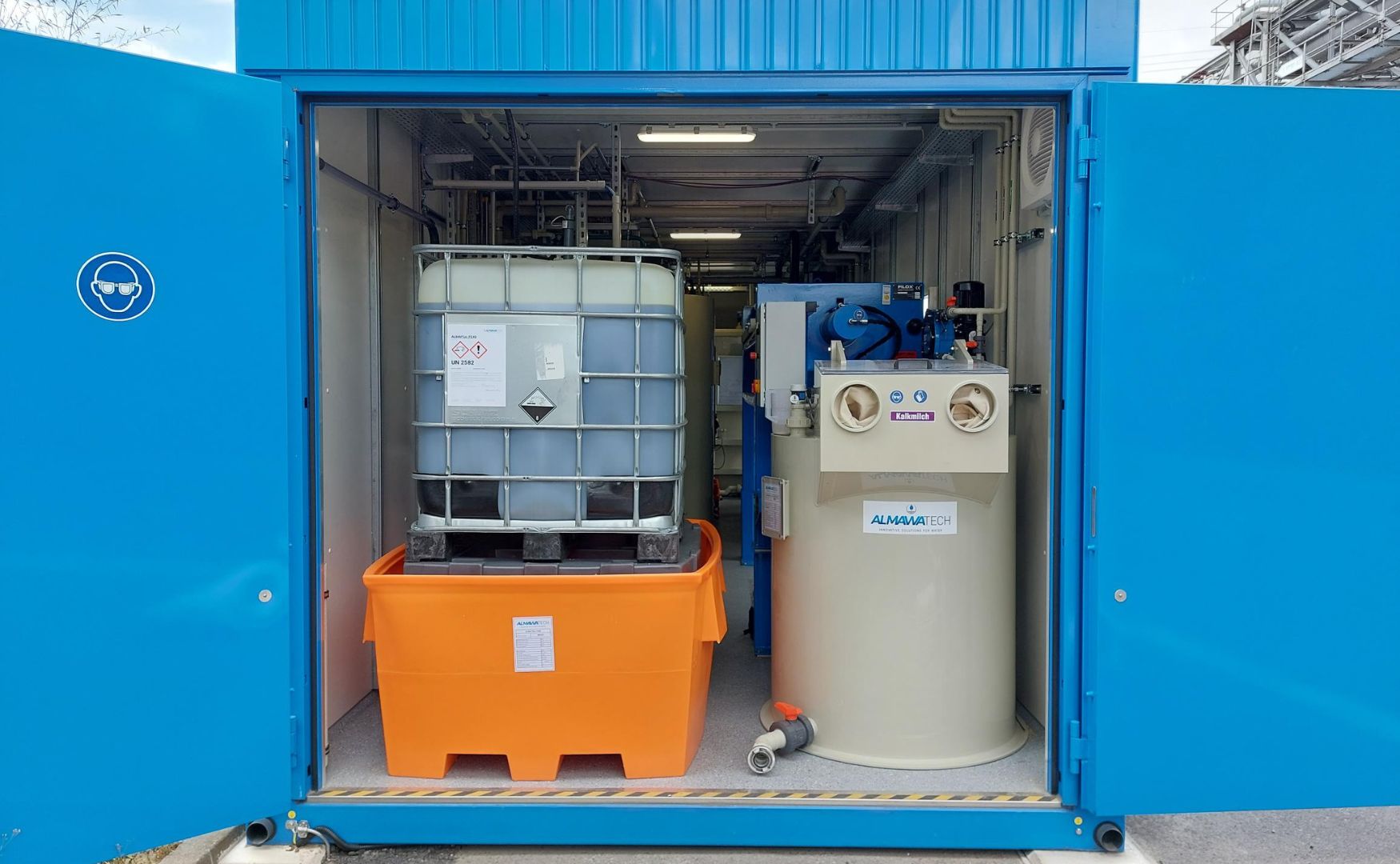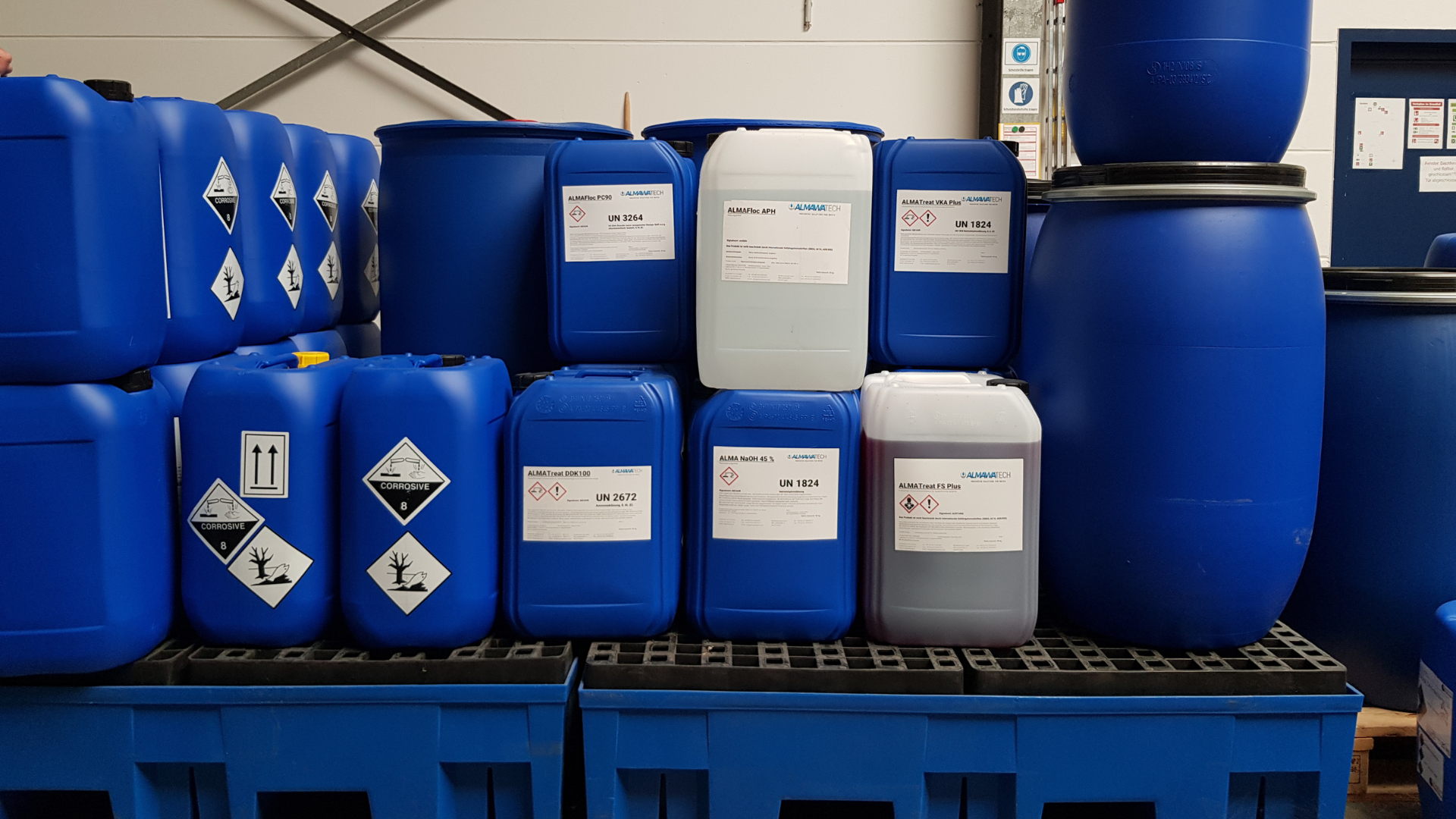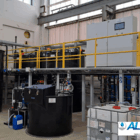Ferric chloride (FeCl₃), also known as iron(III) chloride, is one of the most commonly used chemicals in industrial water and wastewater treatment. It belongs to the group of precipitants and plays an important role in phosphate elimination, heavy metal precipitation and turbidity removal. Ferric chloride is a strong oxidizing agent that is widely used in both municipal and industrial water treatment. Due to its high effectiveness in the formation of flocs, it makes a decisive contribution to improving water quality and compliance with limit values.
Table of contents
Technical background and chemical properties
Ferric chloride is present in solid form as a yellow-brown salt and is highly hygroscopic, i.e. it attracts water from the surrounding air. It dissolves easily in water and forms iron ions (Fe³⁺), which can react with other components in the wastewater. In aqueous solution, ferric chloride hydrolyzes and forms iron hydroxide [Fe(OH)₃], which acts as a flocculant.
The formation of flakes by ferric chloride is based on the following chemical reactions:
Hydrolysis:
- When ferric chloride is dissolved in water, it breaks down into iron and chloride ions. The iron ions react with water to form iron hydroxide.
- The iron hydroxide formed is poorly soluble and forms flocs that bind turbidity and impurities in the wastewater.
Coagulation and flocculation:
- Iron(III) hydroxide flocs bind the finest particles and impurities by neutralizing the surface charge of the particles. This allows the particles to adhere to the flocs, causing them to aggregate into larger units that can be easily separated by sedimentation in CP systems, flotation or filtration.
pH dependence:
- The precipitation reaction of ferric chloride is strongly pH-dependent. Optimal floc formation occurs in the slightly acidic to neutral range (pH value of around 5 to 7). At higher pH values, the solubility of the iron hydroxide decreases, which favors floc formation.

Photo: CP system (precipitation and flocculation system) ALMA Chem MCW with ferric chloride dosing
Applications of ferric chloride in wastewater treatment
Ferric chloride is used in numerous industrial and municipal applications. Here are some of the most important applications:
Phosphate elimination:
- Ferric chloride is used for phosphate precipitation in municipal and industrial wastewater treatment. Phosphates, which can lead to eutrophication and algae growth in bodies of water, react with iron ions and form sparingly soluble iron phosphates, which settle out and are removed from the water. This reaction is particularly relevant in food processing and agriculture, where high phosphate concentrations occur.
Heavy metal precipitation:
- Ferric chloride is used to precipitate heavy metals such as chromium, copper and zinc. These metals react with the iron(III) ion and form insoluble metal hydroxides that can be removed from the wastewater. Heavy metal precipitation is essential in the electroplating industry, metal processing and other processing industries with high heavy metal loads.
Removal of organic compounds:
- Ferric chloride can also contribute to the precipitation of organic compounds. The formation of flocs and the accumulation of organic substances reduces the chemical oxygen demand (COD) in the wastewater. This is particularly important in the pulp and paper industry, where organic compounds are produced as waste products.
Color and odor removal:
- Ferric chloride is effective in removing colorants and odorous substances from wastewater. The floc formation enables the separation of organic and inorganic compounds that cause discoloration or odours. This is a common area of application in textile and dye production as well as in the food industry.

Photo: IBC dosing station for ferric chloride, installed in the ALMA Modul technical room container
Advantages and challenges of using ferric chloride
Advantages:
- High efficiency: Ferric chloride provides strong floc formation, which effectively enables the separation of solids and the reduction of phosphates and heavy metals.
- Fast reaction time: The reaction with water and other ions in the wastewater is fast, making ferric chloride ideal for continuous processes.
- Low chemical consumption: As ferric chloride is highly efficient even in small quantities, chemical consumption is reduced, which lowers operating costs.
Challenges:
- pH dependency: The flocculation process is pH-dependent, which requires precise control and monitoring of the pH value in the wastewater.
- Corrosive properties: Ferric chloride is highly corrosive and requires special storage and dosing techniques. Systems must be made of corrosion-resistant materials to ensure long-term durability.
- Formation of sludge: The precipitation of phosphates and heavy metals leads to the formation of sludge, which must be dewatered and disposed of, e.g. using chamber filter presses. This can lead to additional disposal costs.
Ferric chloride at ALMAWATECH: ALMA AQUA waste water
As a specialist for industrial water and wastewater treatment, ALMAWATECH offers the following product line ALMA AQUA Wastewater product line offers a selection of high-quality precipitants, including ferric chloride in various concentrations and degrees of purity. Our experienced team will help you select the optimum ferric chloride product for your specific requirements and develop customized solutions for your wastewater treatment processes. We also carry out laboratory analyses to tailor the dosage and flocculation process to the exact requirements of your wastewater, so that maximum efficiency is achieved with minimum chemical consumption.

Photo: Application-specific operating resources ALMA AQUA wastewater: precipitants, flocculants, neutralizing agents and other products
Conclusion
Ferric chloride is an indispensable precipitant in water and wastewater treatment and plays a central role in the removal of phosphates, heavy metals and organic compounds. Thanks to its strong floc formation and fast reaction time, ferric chloride is ideal for a wide range of industrial applications. With ALMAWATECH's tailor-made products and expert support, ferric chloride can be optimally integrated into the wastewater process, ensuring compliance with environmental regulations and maximizing treatment efficiency.
For further information on our products, please feel free to contact us at any time!








